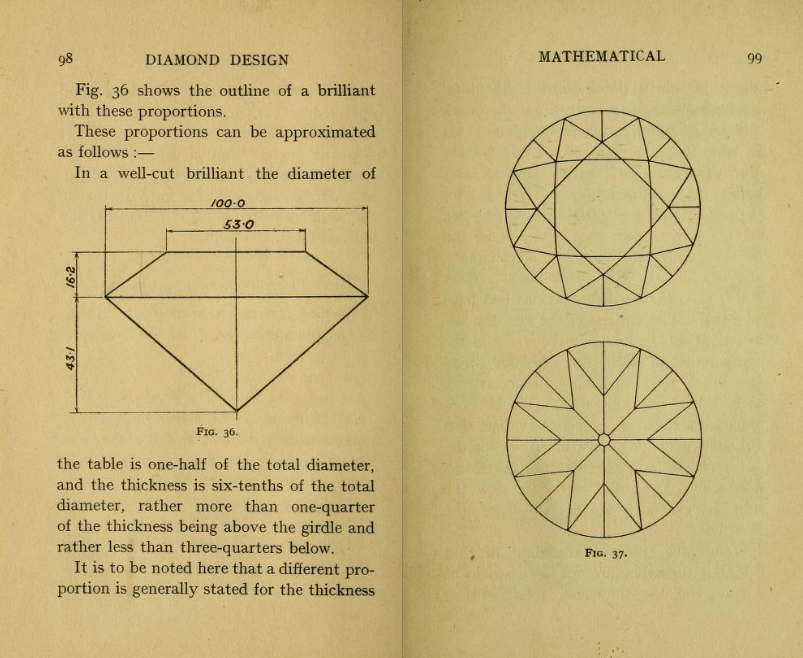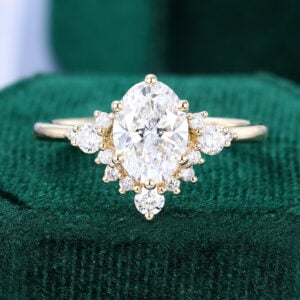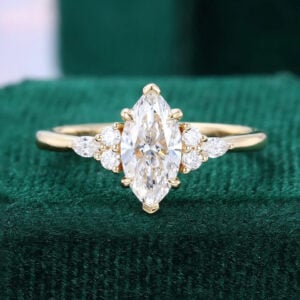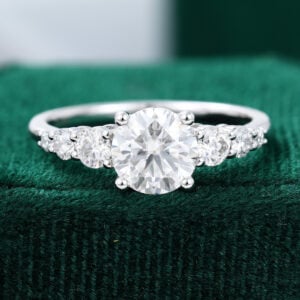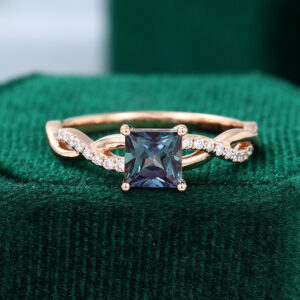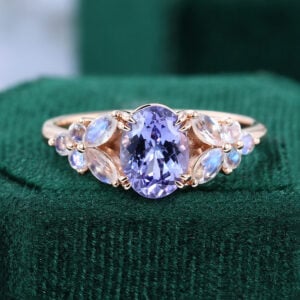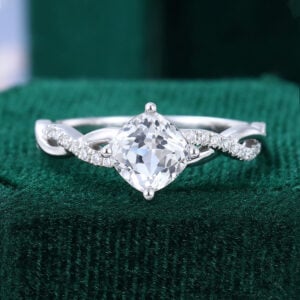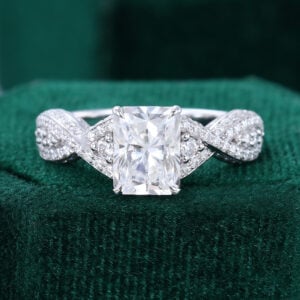The brilliant cut is the undisputed “king” of diamond cuts, with brilliant cut diamonds accounting for 90% of modern diamond sales. It is also the most popular choice for engagement rings today. But what makes it so captivating? This article will take you on an in-depth journey through its history, principles, structure, pros, and cons, uncovering the true brilliance of this iconic cut.
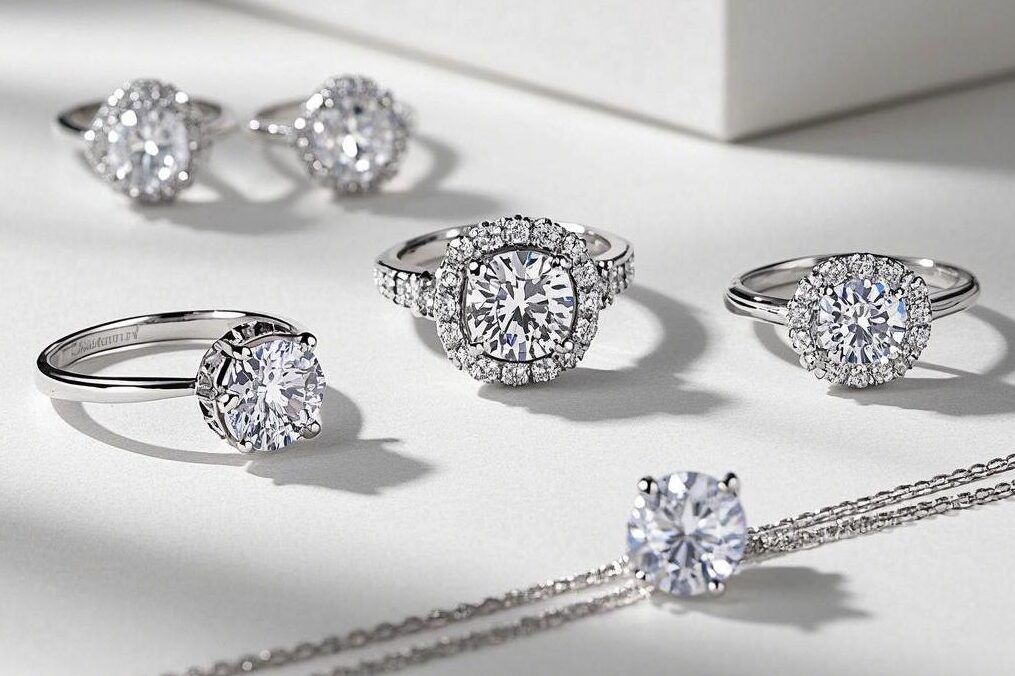
Table Of Contents:
- What Is a Brilliant Cut?
- Historical Evolution of the Brilliant Cut
- Anatomy of the Brilliant Cut (Round Shape Example)
- Brilliant Cut Pros and Cons
- Why Does the Brilliant Cut Outshine Other Cuts?
- Popular & Common Brilliant Cut Shapes
- The 4Cs & the Brilliant Cut
- DIY Brilliant Cut Quality Check
- Brilliant Cut Gemstone Buying Guide & Caring Tips
- Related FAQs
What Is a Brilliant Cut?
The Brilliant Cut is a diamond cut designed to maximize light performance. Its signature feature is 58 precisely angled facets, which create explosive fire (spectral dispersion), brilliance (white light reflection), and scintillation (dynamic sparkle). The classic round brilliant cut is the most iconic, while variations such as oval, cushion, pear, and other shapes follow the same optical principles.
Historical Evolution of the Brilliant Cut
1. Early Prototypes (17th–19th Century)
- Mazarin Cut (1650): A 17-facet “double cut” diamond – an early attempt to control light. Considered the forerunner of the modern brilliant cut.
- Old Mine Cut (18th-century): Chubby, square (58 facets) with large facets, popular in Georgian-era jewelry.
- Old European Cut (19th-century): A refinement of the Old Mine Cut, transitioning to a rounder shape and reducing the culet size to minimize light leakage (58 facets). Thrived in Victorian-era jewelry.
2. The Birth of Modern Brilliance (1919)
In 1919, Belgian mathematician Marcel Tolkowsky calculated the ideal proportions for a round diamond’s light reflection—57–58 facets (details below > Structural Analysis), 34.5° crown angle, 40.75° pavilion angle, and 53% table width. These parameters ensure that incoming light is fully reflected within the crown rather than escaping through the pavilion. His research established the global standard for the ideal round brilliant cut.
3. Technological Advancements (20th–21st Century)
Laser cutting & 3D modeling have enhanced precision beyond Tolkowsky’s era.
The AGA Ideal Cut Standard (1999) and GIA Excellent Cut Grade (2005) further refined quality assessment criteria.
Anatomy of the Brilliant Cut (Round Shape Example)
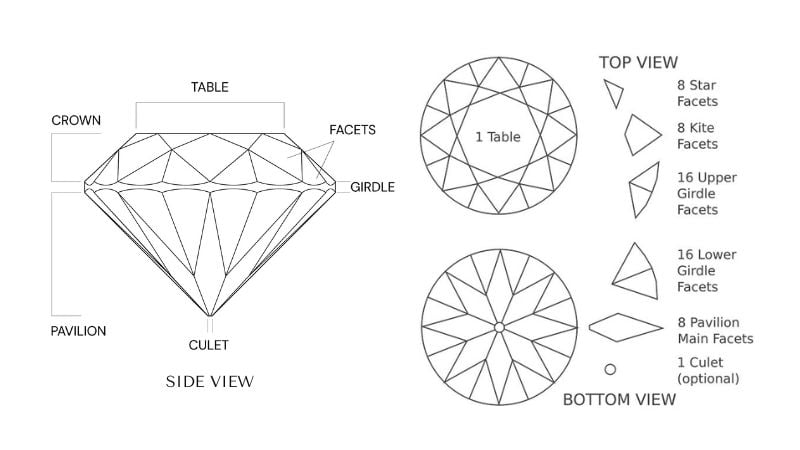
| Component | Function |
|---|---|
| Table (1 facet) | Largest top facet; directs light into the diamond. |
| Crown (32 facets) | 8 star facets, 8 kite facets, 16 upper girdle facets – creates brilliance & fire. |
| Girdle | The outer edge; prevents chipping. Thickness varies from thin to thick. |
| Pavilion (24 facets) | 8 main facets, 16 lower girdle facets – reflects light back through the crown. |
| Culet (1 facet, optional) | A tiny facet at the bottom to prevent sharp-point damage. |
Pros and Cons of the Brilliant Cut
Brilliant Cut Pros
- Unmatched fire & brilliance.
- Suitable for most jewelry styles.
- Enhanced sparkle performance and better concealment of lower color/clarity grades.
- High demand = strong resale value.
Brilliant Cut Cons
- Higher raw gemstone wastage (40–60%), making it more expensive.
- Overly common, lacks uniqueness.
- Top-tier cuts command a significant premium.
- A poor cut dramatically reduces brilliance.
Why Does the Brilliant Cut Outshine Other Cuts?
- Fire
Disperses white light into a rainbow spectrum. The 34.5° crown angle and precise facet alignment maximize this effect.
- Brilliance
Reflects white light. The pavilion’s 40.75° angle ensures total internal reflection, bouncing light through the crown.
- Scintillation
Dynamic sparkle from movement. More facets = more light paths = denser scintillation.
Popular & Common Brilliant Cut Shapes
- Round Brilliant Cut

The most classic brilliant-cut shape (usually 57-58 facets), offering the best light performance and highest value retention.
The only shape with a GIA cut grade.
- Oval Brilliant Cut
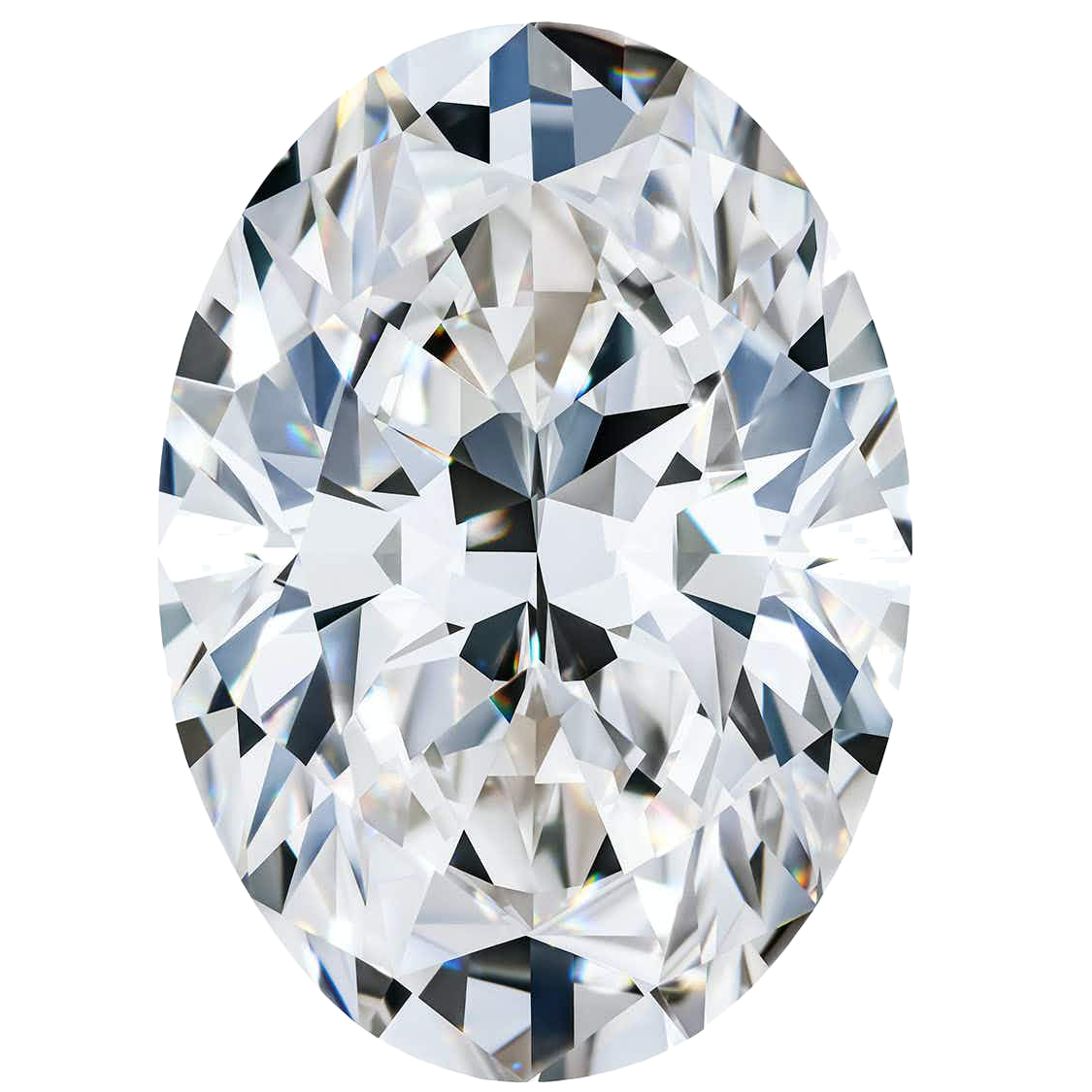
Elongated shape (typically 56-58 facets), creates a larger visual effect, offering brilliance & fire similar to a round cut.
Improper cutting can produce the “bow-tie effect” (a dark band in the middle), though some find it visually intriguing.
- Cushion Brilliant Cut
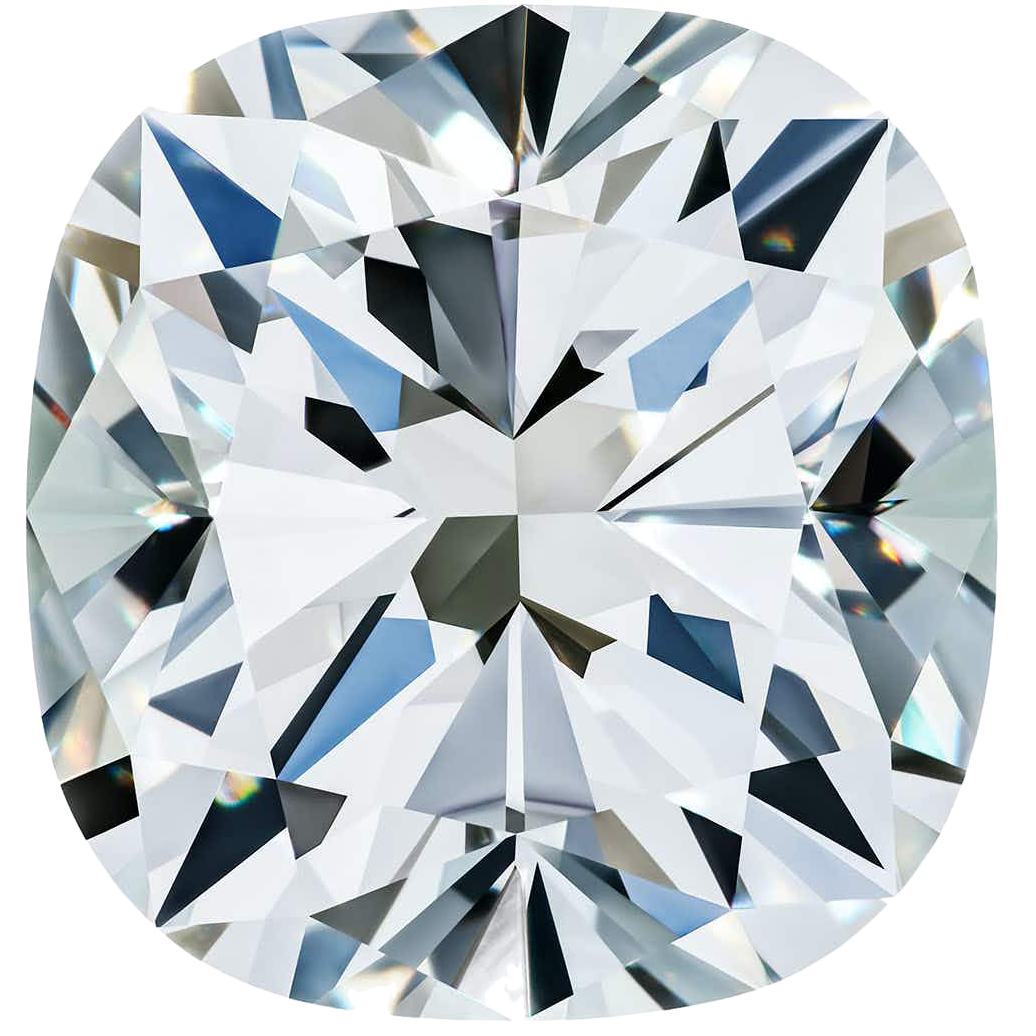
Rounded square (usually 58-64 facets) blending round brilliant cut sparkle with Old Mine Cut vintage charm, producing warm, soft glow with rich fire.
- Pear Brilliant Cut
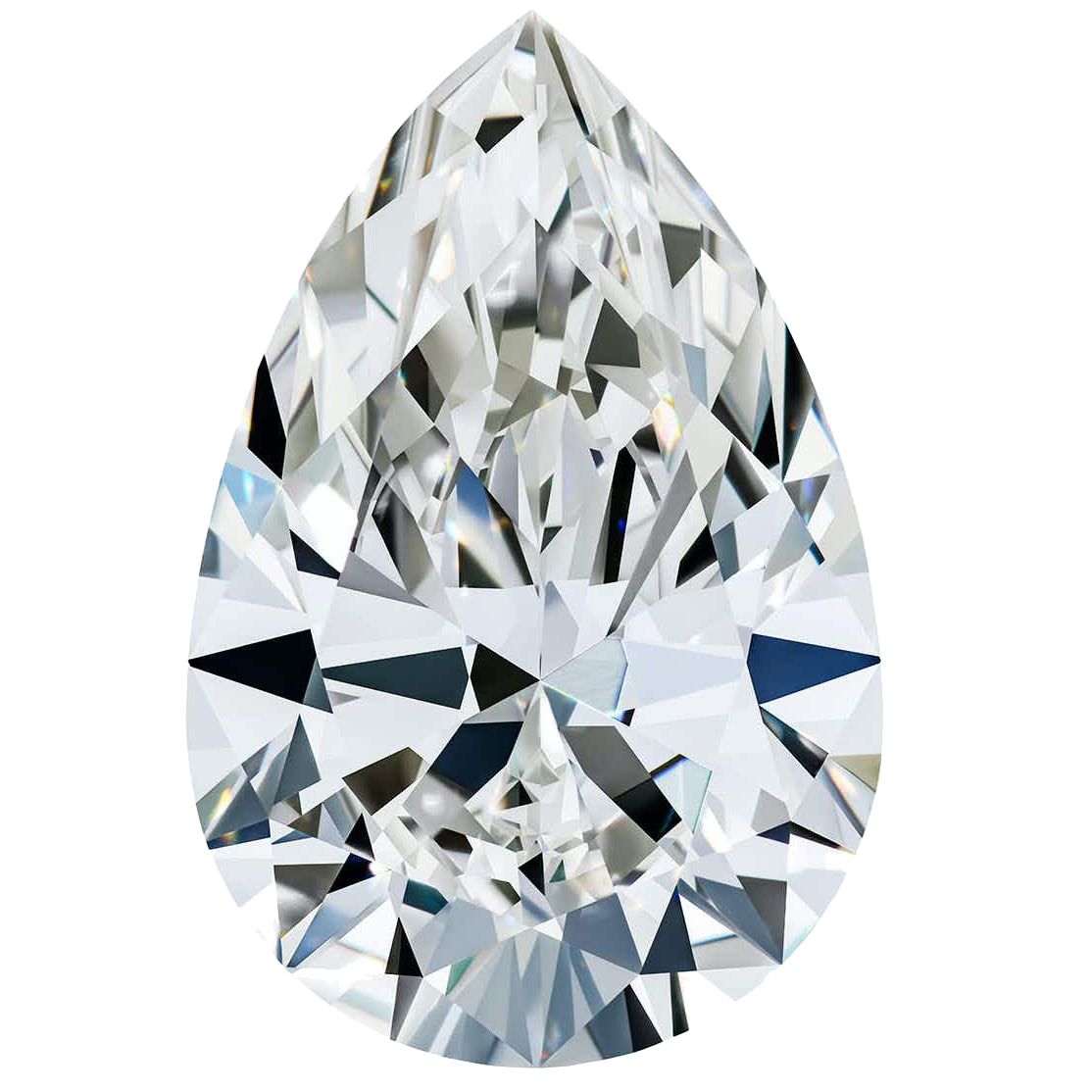
Teardrop shape (usually 56-58 facets), one end rounded, the other pointed, balancing brilliance and elegance while elongating the fingers.
- Princess Brilliant Cut

Square outline (usually 57-76 facets), inverted pyramid pavilion, modern edge with sharp lines and intense fire.
- Radiant Brilliant Cut

Combines brilliant-cut fire and emerald-cut table (70+ facets), excellent fire, with enhanced durability with trimmed corners.
- Marquise Brilliant Cut
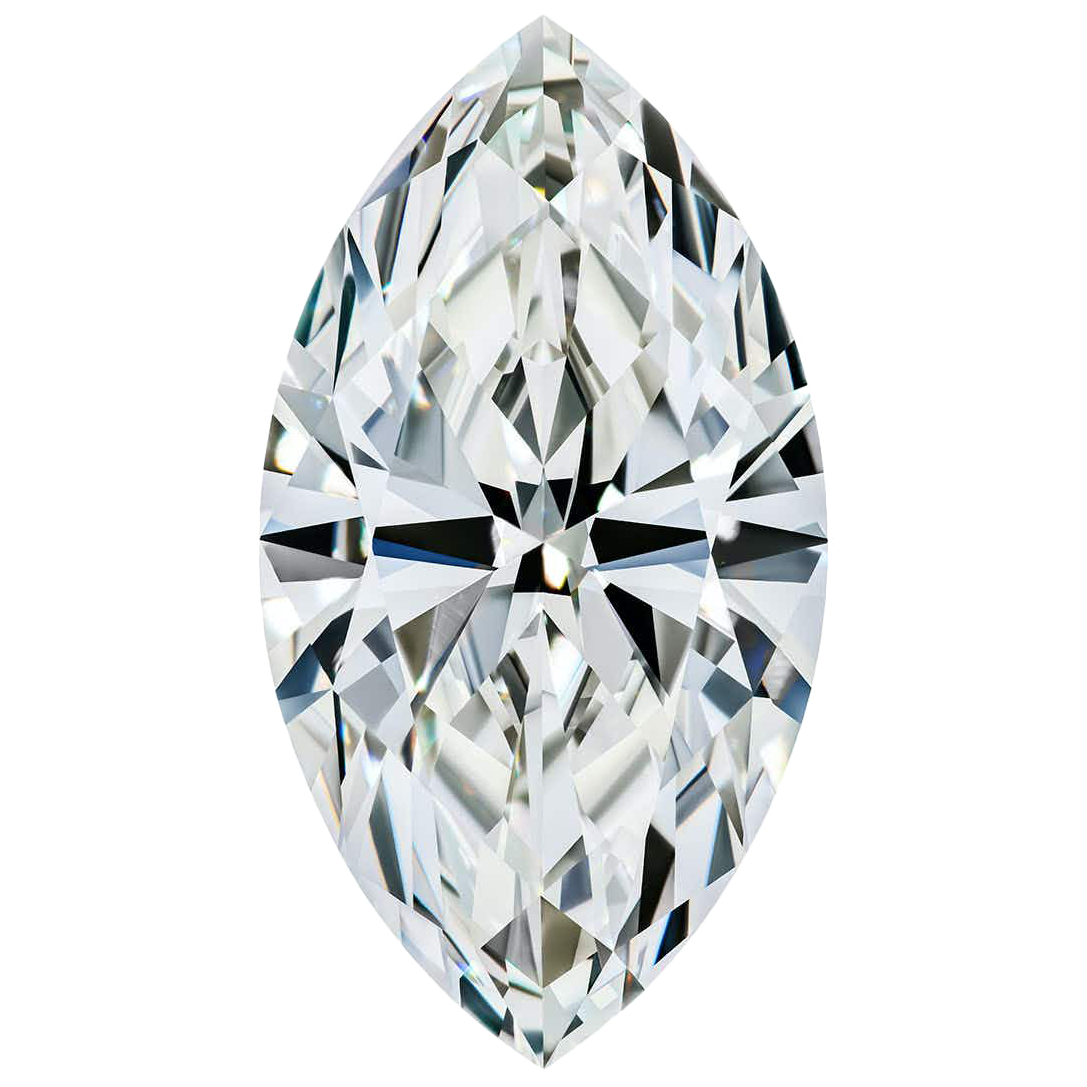
Elongated oval shape with pointed ends (usually 58 facets), maximizing the gemstone’s visual size and lengthening the finger’s appearance.
- Heart Brilliant Cut
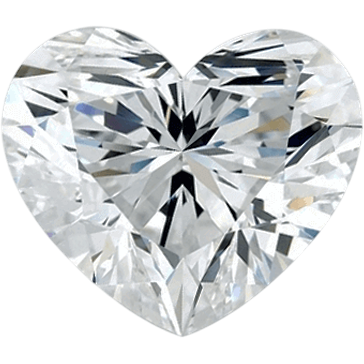
Based on the pear cut, but with a distinct heart shape (usually 56-58 facets), romantic and unique, is ideal for emotional expression.
The 4Cs & the Brilliant Cut
- Cut Quality (Most Important!)
GIA grading ranges from Excellent to Poor. Prioritize cut over carat weight. - Color
Near-colorless (G–H) grades are ideal: brilliant cuts mask faint yellow tints better than step cuts. - Clarity
VS2–SI1 suffices; facets hide inclusions. Avoid cracks near the girdle. - Carat Weight
Brilliant cuts face-up larger than step cuts (e.g., a 1ct round vs. 1ct emerald cut).
DIY Brilliant Cut Quality Check
1. Paper Test
Place the diamond/gemstone table down on the printed text:
- Excellent cut: Text completely invisible (total light reflection).
- Poor cut: Text visible (light leakage).
Not for very dark-colored gemstones!
2. Light Test
Rotate under incandescent light:
- Top-tier cut: Even sparkle, no dark areas.
- Low-grade cut: Uneven flashes with “bow-tie” shadows (common in ovals).
Brilliant Cut Gemstone Jewelry Buying Guide
- Cut Grade Preferred
Pay attention to the jeweler’s cut standard. Look for a GIA/AGS “Excellent” or “Very Good” grade. - Check Proportions
- Table %: 54-58%
- Depth %: 59-62.5%
- Crown Angle: 34-35°
Avoid “spready” diamonds (large table, shallow depth) that sacrifice brilliance.
- Recognize Authoritative Certificates
Look for certificates issued by authoritative organizations. GIA and AGS are more stringent, while IGI and EGL are more lenient. - Explore Hybrid Designs
By strategically increasing the number of facets, the gemstone achieves a “crushed ice” effect, creating a more unique sparkle pattern – additional facets allow light to reflect more within the stone.
Brilliant Cut Gemstone Jewelry Caring Tips
- Cleaning: Soak in warm water + mild detergent, gently scrub with a soft brush, or ultrasonic/steam clean. Note! Avoid ultrasonic/steam cleaning for certain gemstones – consult a jeweler or check the information first.
- Storage: Keep in fabric-lined boxes to prevent scratches.
- Inspection: Check prongs every 6 months to prevent gemstone loss.
FAQs About Brilliant Cut
Why isn’t my brilliant-cut diamond sparkling?
Possible causes include poor cut quality or dirt/oil buildup. Professional cleaning restores 95% of brilliance.
Are all round diamonds brilliant cuts?
No. Round diamonds can also be rose or step cuts, which aren’t classified as brilliant.
Is the brilliant cut the most sparkling?
Yes. Its design optimizes light reflection, especially in round brilliants. Step cut prioritizes clarity/color over fire, rose cut presents a soft rather than sparkling light effect.
Does the brilliant cut make gems look larger?
Depends on the shape. Round brilliants face-up smaller than elongated cuts (e.g., oval), but their brilliance compensates. For maximum size, choose oval, marquise, or pear.
Can colored gems use brilliant cuts?
Absolutely! Any type of gemstone can be brilliant cut. Brilliant cut enhance the hues of colored gemstones.
Is the brilliant cut expensive?
Typically pricier than rose/step cuts due to higher rough loss. Of course, brilliant cuts come in many shapes, and prices vary from shape to shape, with the most expensive being round.
Is the brilliant cut ideal for engagement rings?
Very! In the 20th century, De Beers launched a highly successful marketing campaign featuring brilliant-cut diamonds in engagement rings. Since then, the combination of a brilliant cut and a diamond has become the ultimate symbol of love.
Brilliant Cut: Eternal Radiance
The brilliant cut is more than a technique – it’s a love letter to light itself. Balancing science and art, it transforms gems into stars. Whether you seek tradition or innovation, this cut ensures your stone doesn’t just shine… it’ll dazzle.
Related Readings:
- All You Need To Know About Rose Cut
- All You Need To Know About Step Cut
- Shallow Cut vs. Ideal Cut vs. Deep Cut
